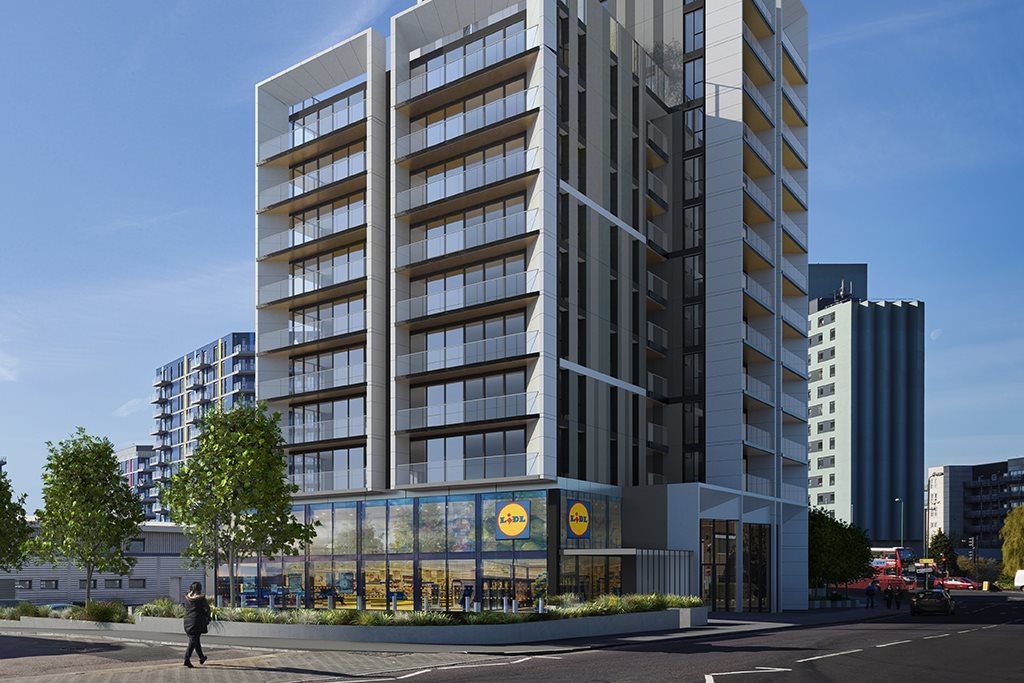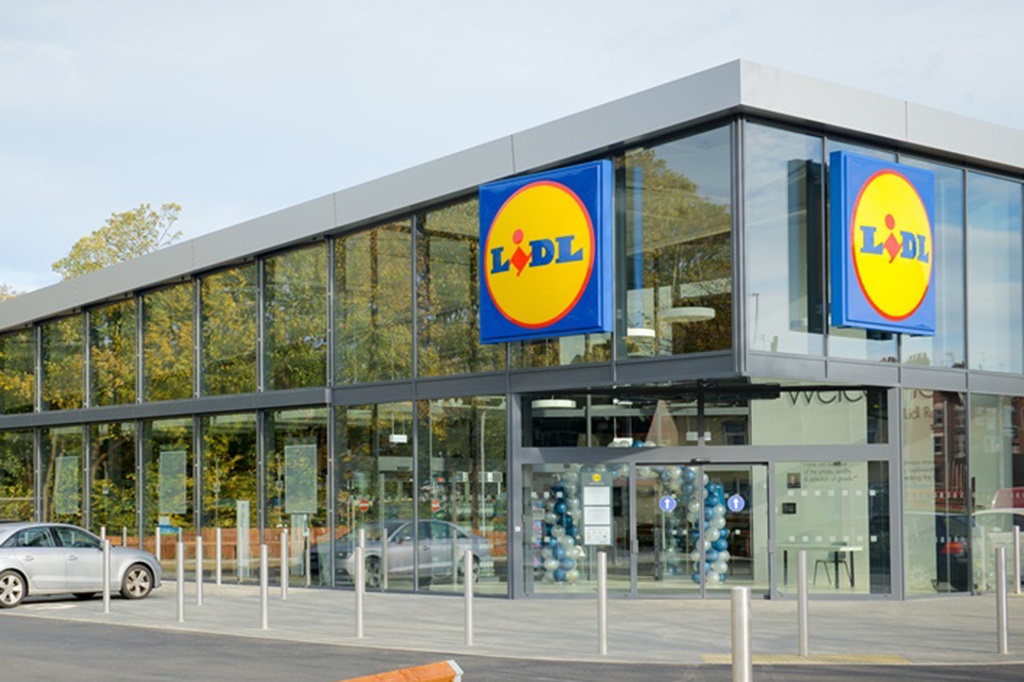Lidl plans to build 3000 houses and a school for hard-up families

Lidl plans to build affordable homes in line with its money-saving image as part of a drive to open 50 new stores a year
Cut-price supermarket Lidl has announced plans to build more than 3,000 homes and a primary school.
Alongside providing cheap groceries to families on a budget, the German chain has already been building homes. So far just 335 have been built so far and a further 476 in the pipeline.
It has now unveiled plans to turbo-charge its involvement in the property market and get building.
 The Lidl store in Epsom with affordable housing. Image: Lidl
The Lidl store in Epsom with affordable housing. Image: Lidl
What are Lidl's housing plans?
Lidl plans to develop more than 3,000 homes - and it wants them all to be London. Lidl has already started constructing a two-storey site in Richmond, West London. In Richmond, Deer Park primary school will have a new home over two floors above a Lidl store, including an outdoor playground with space for football and hockey. The project is expected to be completed next year.
Across the board, Lidl is planning to build some of the homes itself, while others are part of wider schemes led by developers.
Lidl wants to focus on affordable homes, in line with its ultra-cheap groceries.
Christian Härtnagel, Lidl’s UK chief executive, says the group plans to keep property prices affordable and that he wants the type of person who shops at Lidl to live in the homes.

3D design of the Alperton Lidl store and housing. Image: Lidl
Why are they building homes?
Lidl wants to open 50 stores a year around the country. It is believed that this plan to build affordable homes at the same time should help with planning permission applications to local councils.
That’s because promising to build flats or public facilities such as schools as well as a new store can help persuade councils that a new development could be beneficial to their community - particularly in boroughs where local councils are under pressure to generate new and affordable housing.
Christian Härtnagel said: “As a result of more and more people choosing to shop at Lidl we are able to continue investing into communities across the country that don’t currently benefit from our unique offering, through the opening of new stores and the creation of new jobs.
“Not only is this enabling us to provide greater choice for consumers, especially in the provision of healthy, affordable food, we’re also proud that our stores are increasingly helping to pave the way for mixed-use developments, which in turn are supporting important initiatives, such as housing shortages.”
Härtnagel hinted that there’s even more to come. He said: “We’re entirely open to exploring opportunities to help facilitate further developments. In London alone, for example, there is the potential for Lidl stores to be part of schemes that could see over 3,000 new homes being built over the next three years. It continues to mean a great deal to us that we are able to support many of the communities that we're a part of by providing added value above and beyond affordable food.”
What is a mixed-use development?
It does what it says on the tin. It sees residential properties mixed with retail, offices mixed with leisure facilities - like a gym - or a combination. Mixed-use schemes are increasingly suited to busy modern lifestyles where residents would prefer to have a shop or gym in their building rather than have to travel to shop or work out.
Is Lidl the first supermarket to develop property?
Lidl’s move follows similar developments by rival chains, such as Sainsbury's, Tesco and Morrisons. Sainsbury’s was part of a scheme involving 700 homes in southwest London and recently won permission for a development involving 683 homes in east London. Meanwhile, Tesco built hundreds of homes around two of its London stores.
Morrisons won permission last year for a plan to build nearly 600 homes as part of the redevelopment of its Camden store in north London.
What if Lidl build in your area?
The news might be good for those who live near prospective Lidl sites.
Research has shown that house prices near budget retailers have surged at a faster rate than those near supermarkets generally in recent years. Properties close to Lidl - as well as Aldi, Morrisons and Asda - have typically increased by 15% (£29,316) in value over the past four years, according to Lloyds Bank.
This is a faster percentage increase than for house prices near all major supermarkets across its study, at 10%. The average house price near a Lidl is £244,687.

However, despite the rapid price uplift for homes near budget stores, the report found that the so-called ‘Waitrose effect’ still commands the biggest house price premium in cash terms.
House prices in areas near a Waitrose are typically higher than those near the other supermarkets in the study at an average of £420,112.
READ MORE: The secret’s out: London’s new commuter belt revealed
Comments
Be the first to comment
Do you want to comment on this article? You need to be signed in for this feature